Materials Workshop: Channel Glass Finds Its Groove in Homes
http://decor-ideas.org 08/17/2014 20:14 Decor Ideas
Heavy commercial and industrial projects often provide fodder for my residential work, especially when it comes to materials. Channel glass is one material that carries over well. It’s an eminently robust material whose translucency lends a soft and welcoming feel in a residential setting. Consider channel glass a sort of modern take on traditional stained glass — luminous and mysterious. While it’s an outwardly simple and beautiful material, it has an underlying complexity that bears further investigation.
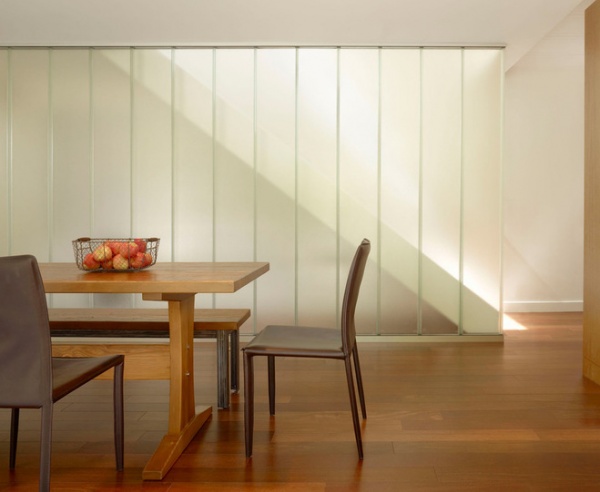
What is it? Channel glass was developed in Europe and has been used mostly in commercial buildings for more than 30 years. Essentially it’s a structural (self-supporting), cast, translucent glass plank named for its C-shape, which in architectural parlance is a channel. It’s typically used where there’s a need for both diffused natural light and privacy, which are naturally competing design agendas.
The channels are between 9 inches and 19 inches wide, about 2½ inches deep and up to 23 feet in length. They are fully capable of supporting their own weight without the need for other horizontal reinforcement. Most often channel glass is used in a vertical orientation, where the structural planks lend a corduroy or pinstripe look to an exterior facade.
Unlike traditional float-glass panes, the shape and depth of channel glass create a pocket in exterior walls, making it ideal for adding insulation.
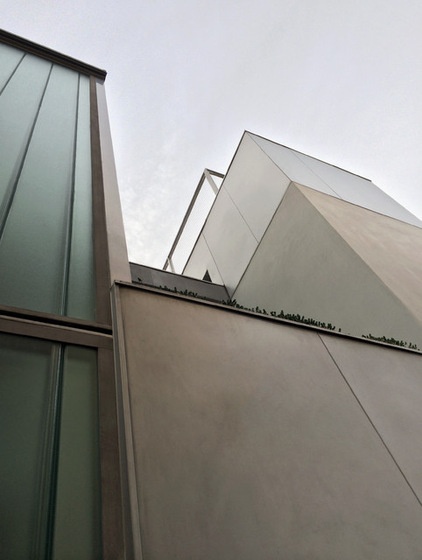
Composition. The basic components are lime, soda and sand. But unlike most other glass, channel glass also contains recycled glass. In fact, a full 60 percent of its raw materials are recycled; some come from postconsumer sources and some from the factory that manufactures it.
The channels are roll formed from a roughly ¼-inch-thick ribbon of molten glass that has been heated in a special furnace. It’s then carefully cut to custom length and cooled.
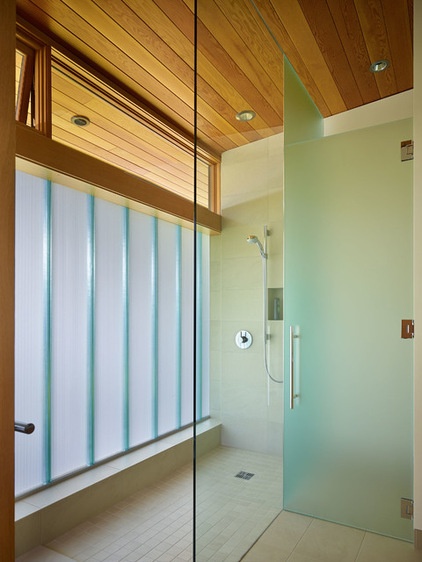
Applications. While there are many possible applications for channel glass, the best candidates are spaces that require both natural daylight and privacy. Some examples:
Bathing spaces, for privacy with the benefits of natural lightWork areas, studies and studios, where glare-free natural light is importantArt display and gallery areas: UV coatings allow daylight and artwork to coexistUrban sites with competing light and view concernsTrombe walls, for passive solar heatingRailings, space dividers and privacy screensAny space requiring diffused, glare-free natural light
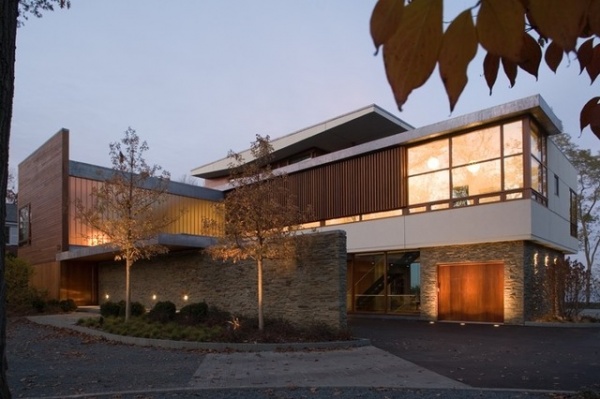
Museum-quality daylight. Because of its manufacturing process, translucent channel glass provides interiors with an evenly diffused light without shadows or hot spots.
In fact, the daylighting properties of channel glass were one of the main reasons it was selected by Steven Holl for the recent addition to the Nelson-Atkins Museum of Art in Kansas City, Kansas; its exterior is draped almost entirely in channel glass. There Holl created a series of “lenses” that permit daylight to wash the subterranean gallery spaces. Special treatments on the channel glass on the exterior walls inhibit the transmission of damaging ultraviolet rays to the interior spaces and ensure that an evenly diffused, white light naturally illuminates the artwork. This type of glare-free diffuse natural light is an excellent fit for the home too.
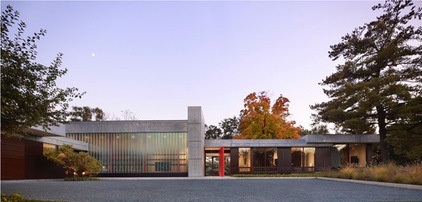
Exterior use. Because it’s a resilient material, channel glass can be used in both interior and exterior applications. For exterior use it’s typically installed in a double-glazed configuration with one interior-facing and one exterior-facing channel.
Many of the standard limitations of plate glass regarding size and span capabilities don’t apply to channel glass because of the structural qualities the shape imparts. The channels are suited to vertical spans up to 23 feet in length, which exceeds a typical two-story eave height. And, with unbroken horizontal spans exceeding 500 feet, channel glass creates the possibility of cladding entire structures in glass.

For exterior use the edges of the channels are captured and attached to the building with an aluminum or steel frame, what architects typically call a storefront or curtain-wall system. The subframe that captures the upper, lower and perimeter edges of the channels is visible here. This subframe is necessary to keep water out and direct it into the exterior wall system.
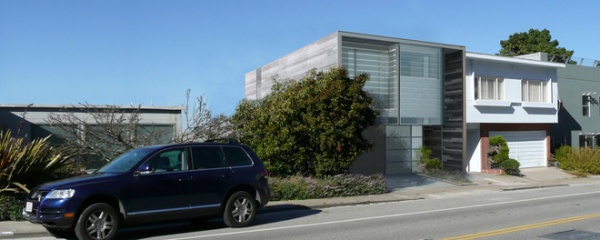
Horizontal configurations lend themselves to harvesting the sun in a unique way if they’re paired with the right glass type. One of the major suppliers of channel glass, Bendheim, has developed a type of glass called Prismasolar, which has deeply cut V-shaped prismatic flutes. The flutes are tuned to allow low-angle winter solar radiation into the building while keeping the heat from the high-angle summer sun out.
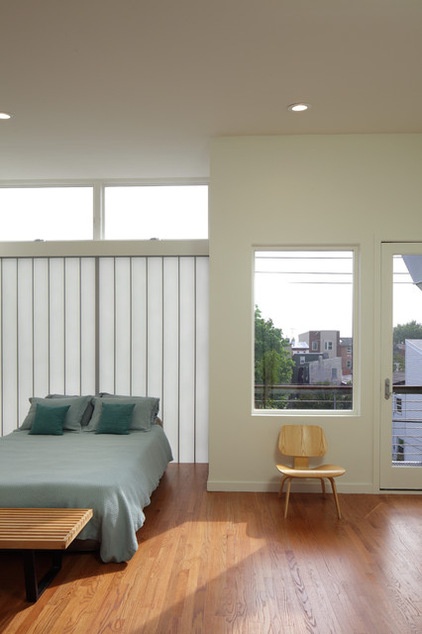
Thermal performance. Because standard glass insulation values are quite low, hovering around R-2, improving the thermal characteristics is a must for any exterior wall use. There are several ways to accomplish this; special coatings on the glass are a good first step. These coatings can be chosen for their desired effect: to reflect heat energy back into the building on the interior and to reduce the amount of solar heat gain being absorbed by the building from the exterior.
Translucent glass by nature actually acts as a shading device in the intense afternoon sun, lowering the transmission of heat energy into a structure.
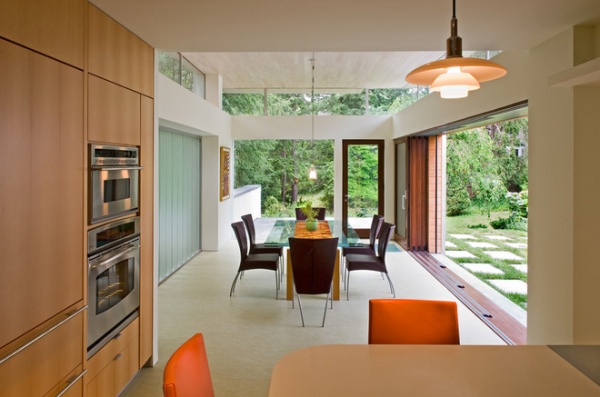
Another even more efficient way of increasing the thermal properties is to add an interior blanket of translucent-light-diffusing insulation between the glass channels. This way the system can reach close to an R-5. The insulation also aids in light diffusion, limits heat gain, limits sound transmission and slows vapor transmission.
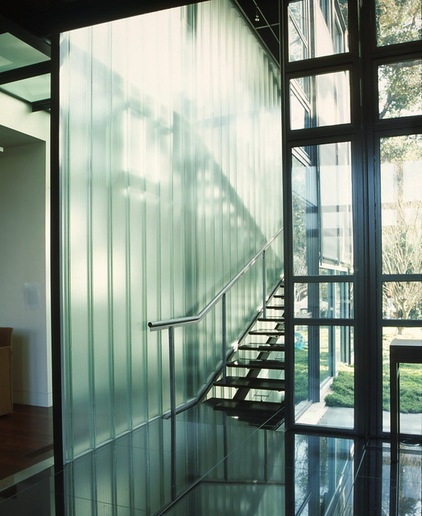
Interior use. The self-supporting nature of channel-glass planks means this glass lends itself to some wonderfully expressive applications indoors too, and the great variety of finishes and colors available makes it ripe for experimentation.
The clear vertical span of the channel glass separating the stair runs in the space here would typically require intermediate structural support framing for any other glazing option. But the channel shape and thickness allow the glass to span levels as a single piece.
Insulation can also be added on interior double-glazed walls to boost a wall’s sound- and light-diffusing properties.
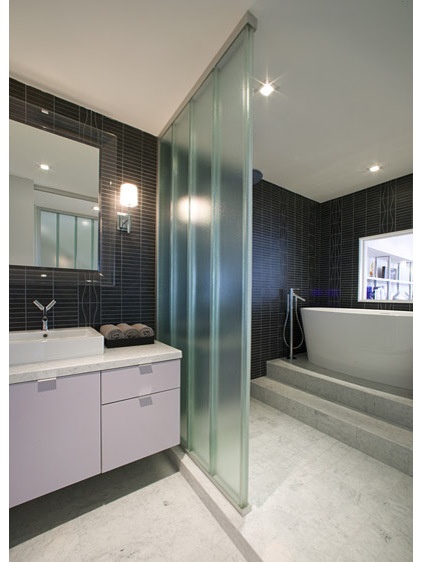
A freestanding partition here separates the bathing space from the vanity. No special finishing was required of the channels (other than tempering the glass for a bathroom application).
Plus, interior partitions offer a great opportunity to rethink long-held ideas about glass’ being a solely planar material, for which curves are usually out of the question. With channel glass, which uses a narrow module, the sections can be interlocked and staggered to conform to serpentine curves easily.
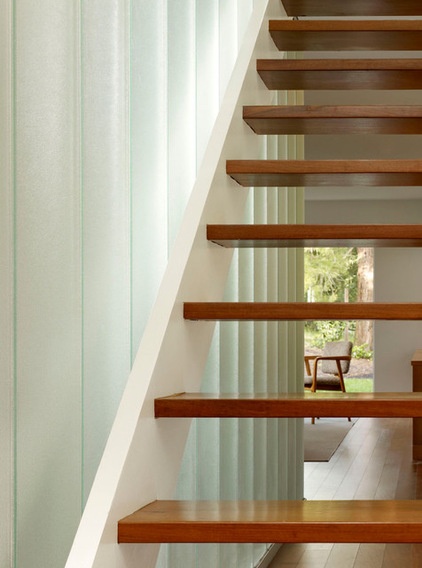
The moire pattern effect with channel glazing is subtle but quite beautiful, making the glass a perfect complement for a stair guard that changes as one passes by.
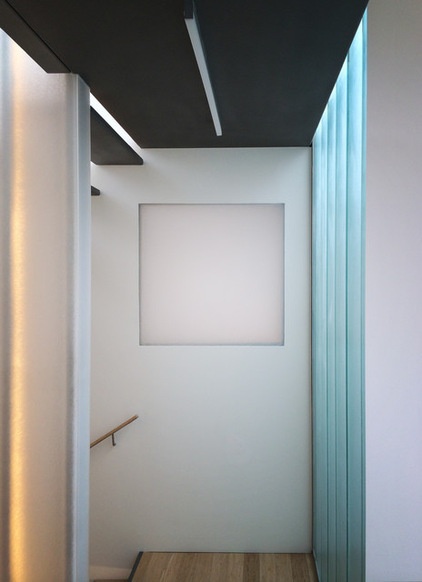
Color. Standard glass contains iron, which aids in lowering the melting point of glass but gives it a greenish cast. If you’re looking for a clearer, whiter glass, you can specify low-iron glass. Or consider tinted back-lit channel glass for even greater color control.
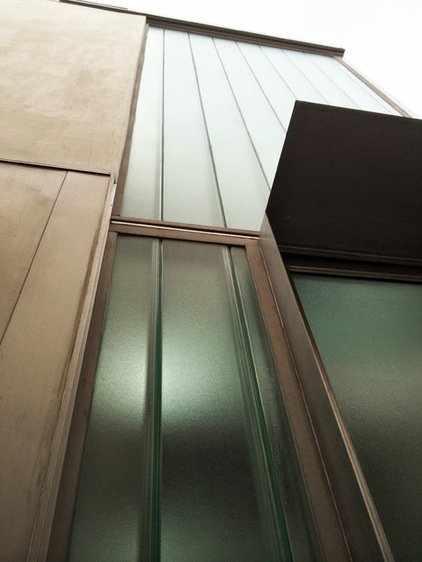
Texture. A range of textures can be specified, and each manufacturer has different names for the textures.
Standard: Dimpled, orange-peel-like surfaceNetted: Small, net-like gridRibbed: Thin ribsFluted: Round ridgesClear: Because it’s cast and not a float-glass product, it won’t appear optically clearSandblasted: A frosted look for higher light diffusion; the degree of opacity can be controlledAcid-etched: A less expensive option than sandblasted but similar in appearance
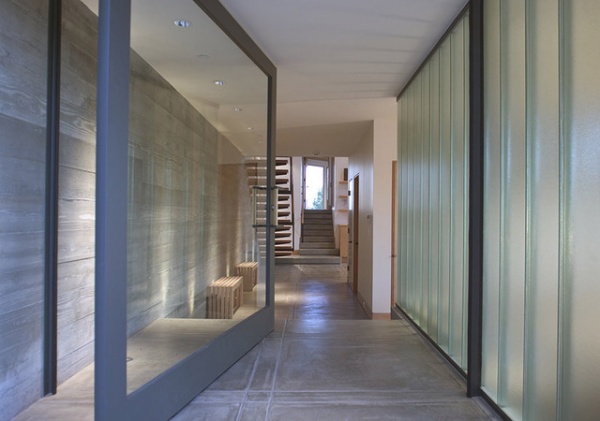
Sustainability. The manufacturing of standard glass is, by nature, extremely energy intensive. But it takes just half of the energy to produce glass from cullet (recycled glass) as it does to produce it from raw materials. Channel glass boasts 60 percent recycled content — 20 percent from factory waste and 40 percent from postconsumer waste.
Channel glass can contribute LEED points in several categories due to its high recycled content and daylighting contribution to interior spaces.
It also bears mentioning that the factories for channel glass are located in Europe, which means shipping to countries outside of Europe will contribute to the product’s (already substantial) carbon footprint.
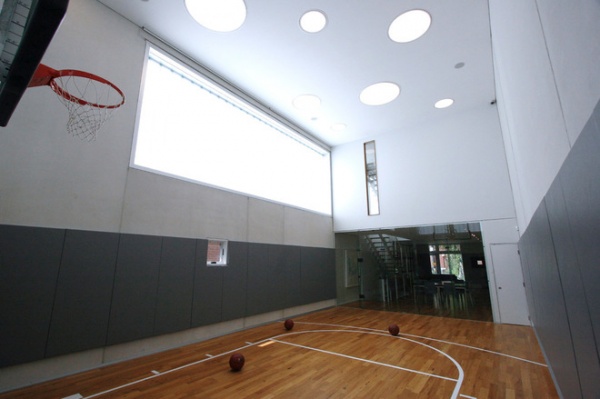
Other special considerations:
Solar heat gain: Beyond treating the glazing itself, solar gain should be planned for during design, because overheating can be a problem on south- and west-facing walls. Shading devices (interior and exterior) and an appropriate ventilation system are worth considering.Hurricane glazing: For areas prone to hurricanes, Pilkington offers a hurricane-rated channel glazing system.Wind loading: Special consideration should be given to spans and related wind loads. It’s recommended that you rely on a good engineer to help with your design.
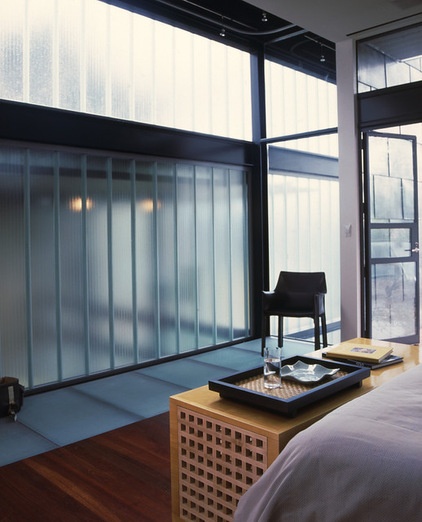
Cost. Because of the wide range of options and configurations, cost can be hard to quantify. A good guideline is to assume a 20 percent premium over the cost of standard wall construction. A double-glazed, tempered, exterior wall system ranges from $65 to $75 per square foot for the material cost. A single-glazed wall would be half the cost. Of course this depends on the exact options selected. To add insulation, plan on an additional $14 to $20 per square foot.
While this certainly isn’t the most affordable way to dress the exterior of your home, the up-front cost can be offset by other factors, such as the added daylight, which can lower artificial lighting costs, not to mention the intangible effects of natural light on daily life. It can also reduce the need for window coverings, draperies and shades due to its naturally shaded surface. And glass exterior walls require virtually no maintenance.
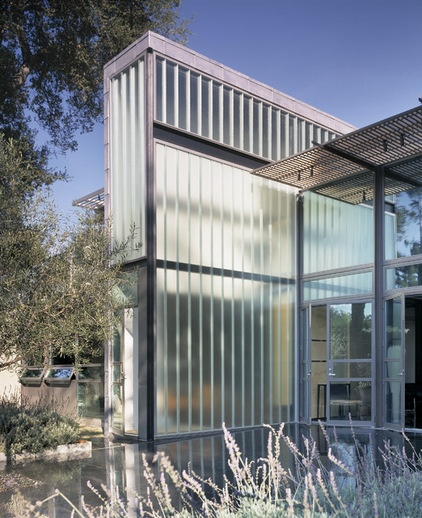
Manufacturers. There are two primary distributors for channel glass in the United States: Bendheim Wall Systems, which distributes Lamberts’ Linit channel glass, and Technical Glass Products, which distributes Pilkington Profilit. Each manufacturer has proprietary systems available for connecting the channel glass to the underlying structure as well as an array of finishes, colors and textures to choose from.
The material itself is manufactured in Europe, where it’s been in common use for more than 30 years. These manufacturers have the specialized knowledge and experience to aid you in the best design practices for your particular situation. They do stock quantities of channel glass in the U.S.; special orders require a longer (12-week) lead time.

Advantages of channel glass:
Natural light: Lowers artificial lighting loadsPrivacy: Allows for light in private spacesStructural: Self-supporting, uninterrupted spans without intermediate supportsR-values: With the right coatings and insulation, much higher than standard glassNear-zero maintenance
Disadvantages:Cost: 20 percent more than a standard wallThermal performance: Lower than a standard wallSubstantial carbon footprint: Ships from EuropeHeat management: Must carefully regulate large glazed areas
The benefits and liabilities suggest taking a focused approach, using channel glass in select areas that maximize its strengths.
More: Design Workshop: The Many Highlights of Translucency
Related Articles Recommended












